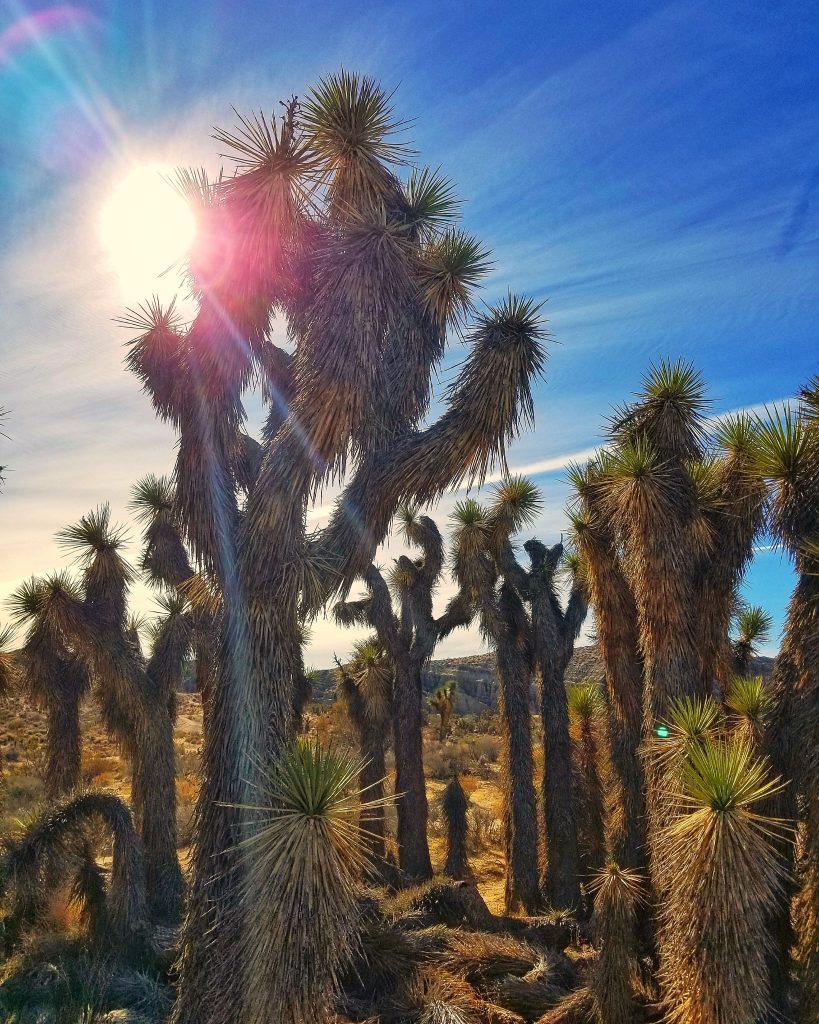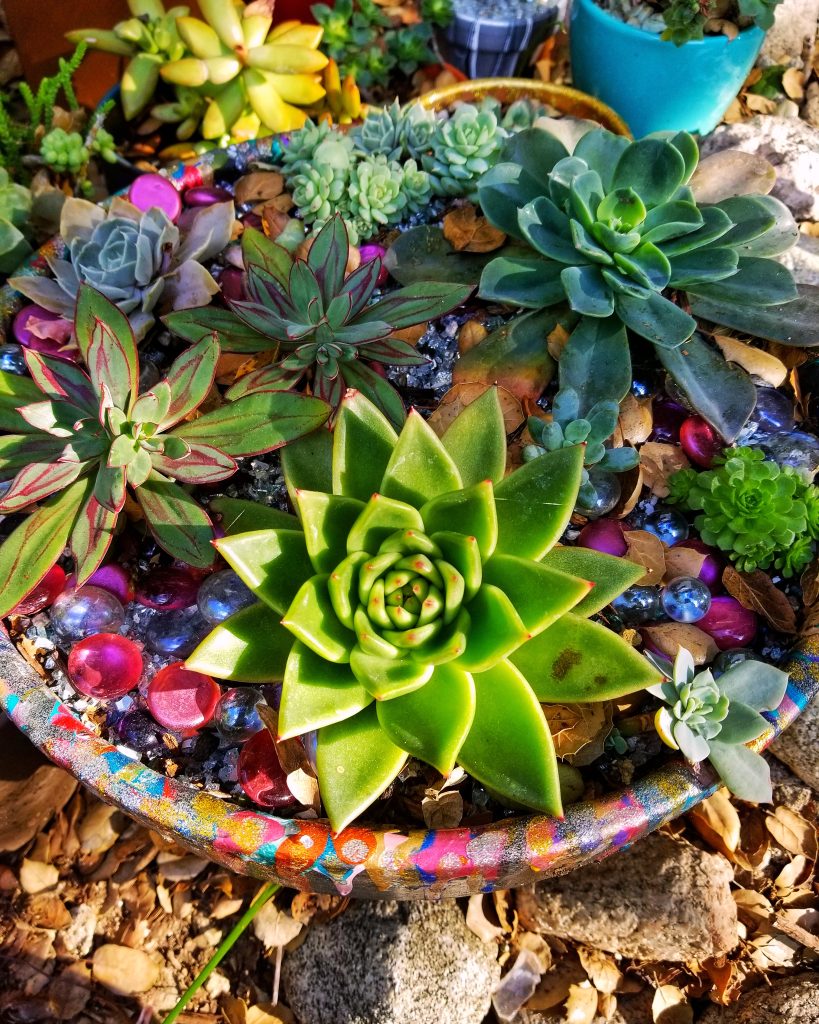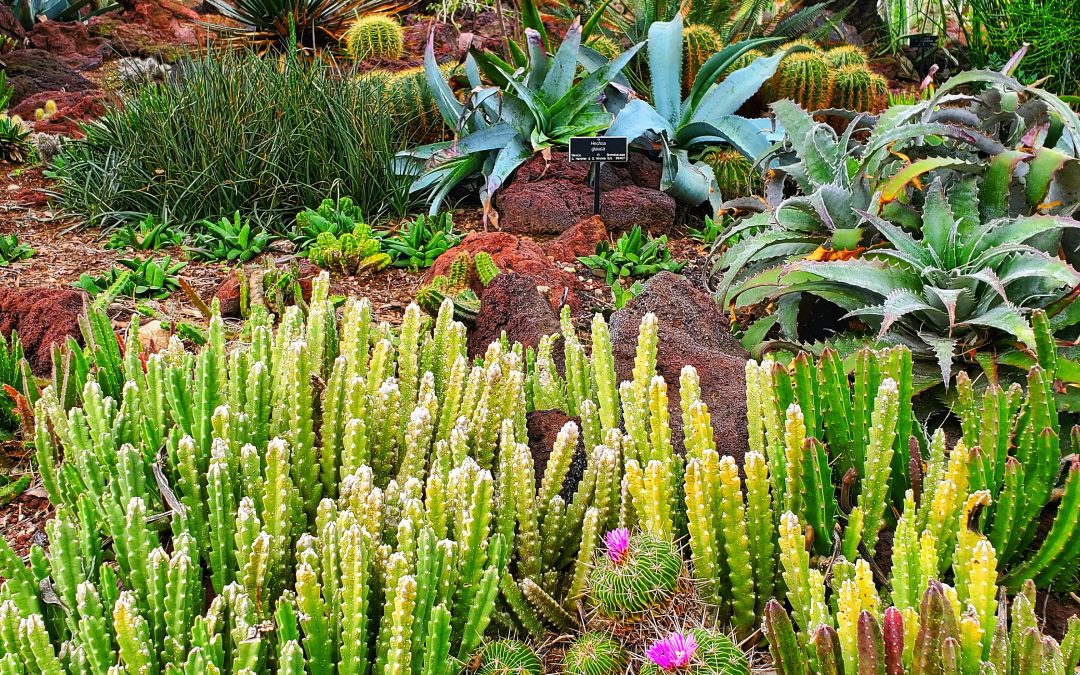Sustainability Meets Style: Building A Water-Wise Garden
Designing a beautiful garden that thrives in the arid conditions of the Los Angeles area, while also conserving water, is both a challenge and an opportunity for homeowners. Drought-tolerant landscaping focuses on creating a visually appealing space that requires minimal irrigation. This approach is not only environmentally sustainable but can also be extremely cost-effective over time! In this exploration, we’ll delve into the principles of drought-tolerant landscaping, the selection of plants suited to the climate of Los Angeles, and practical tips for creating a garden that flourishes even in the water-scarce conditions of Southern California.
Understanding Drought-Tolerant Landscaping
The core principle of drought-tolerant landscaping can be simplified down to one main goal: using plants and implementing landscaping techniques that reduce water consumption. This method does not imply a barren or rock-filled garden, and in fact, it could imply quite the opposite! By introducing drought-tolerant techniques and through thoughtful selection of plants, materials, and other design elements your landscape can transform into a vibrant, lush space that complements our semi-arid climate.

Designing with Water in Mind
Starting your design with water in mind can help you conserve even more in the long run! Consider amending your soil, mulching, or implementing more efficient irrigation techniques before installing a water-wise landscape. Depending on which plants you plan to install in your landscape you might consider the following additions to your garden:
Soil Improvements: Enhancing the soil with compost can increase its water retention capabilities, reducing the need for frequent watering.
Mulching: Applying a layer of mulch around some plants helps retain soil moisture, suppresses weeds, and reduces evaporation. Organic mulches, like bark or straw, add nutrients back into the soil as they decompose as well!
Efficient Irrigation: Utilizing drip irrigation systems or soaker hoses targets water directly to the roots of plants where it’s needed most, minimizing waste.
Choosing the Right Plants
In crafting a drought-tolerant landscape, plant selection is crucial not just for aesthetics but also for eco-sustainability. Here, we’ll explore a variety of plants ideal for Los Angeles gardens, each with its unique charm and environmental benefits.
1. Native Plants: Embracing native species promotes local wildlife through habitat expansion and can help reduce your garden’s maintenance needs over time. Native species are well adapted to the local climate and soil conditions, requiring less water, fertilizer, and maintenance compared to non-native plants. By using native plants, you are promoting biodiversity by providing habitat and food sources for local wildlife such as birds, bees, and butterflies. This, in turn, contributes to a balanced ecosystem and can reduce the need for pesticides. Additionally, using native plants helps conserve water resources by reducing the reliance on irrigation, making it a sustainable choice for drought-tolerant landscaping.
- California Poppy (Eschscholzia californica): The state flower of California, this vibrant orange bloomer is not only a treat for the eyes but also highly adaptable to poor soil conditions! The California Poppy is also a significant attractant for pollinators like bees and hummingbirds, playing a crucial role in supporting local ecosystems. Interesting fact: The California Poppy can close its petals at night or on cloudy days to protect its precious pollen.
- Matilija Poppy (Romneya coulteri): Known for its large, white flowers with yellow centers, it’s often referred to as the ‘Fried Egg Plant.’ These beauties are not just stunning; they’re also fire-resistant, which is a critical trait for plants naturalized to areas prone to wildfires. These striking flowers also have a delightful fragrance that can attract beneficial insects such as ladybugs and lacewings, which can help to naturally control the pest populations in your yard.
- California Lilac (Ceanothus): With its deep blue flowers and evergreen foliage, Ceanothus is a magnet for butterflies and other beneficial insects. Some species can fix the nitrogen levels in your soil as well, which can enhance soil fertility and reduce the need for fertilizers.
2. Succulents and Cacti: These are champions of water conservation, storing moisture in their chubby stems or leaves. These plants have adapted to arid conditions by efficiently capturing and retaining moisture, making them highly resilient during times of drought. By incorporating succulents and cacti into your landscape, you can help conserve water and reduce the overall water demand of your garden. Additionally, these plants often require less maintenance, further contributing to a sustainable and eco-friendly landscape design. Succulents and cacti are excellent choices for drought-tolerant landscaping.
- Agave (Agave spp.): Not only are Agaves gorgeous, architectural looking plants with striking forms, but they also have a strong drought-survival strategy from their native desert homes. These plants store massive amounts of water in their thick leaves and most can thrive on rainfall alone after they’re established! Agaves come in various sizes and colors, adding a diversity of textures and shapes to your landscape as well. Some species also attract bats and moths during their nighttime pollination. And Agave tequilana is famously used to produce tequila!
- Jade Plant (Crassula ovata): Another popular succulent, the Jade Plant, can live for decades with minimal care in this region. It’s often associated with good luck and prosperity, and can add visual interest to a landscaping project. This species also does remarkably well as a house plant, where the Jade Plant is a notably excellent air purifier, filtering out indoor pollutants and enhancing the air quality in your home!
- Barrel Cactus (Echinocactus grusonii): With prominent ribs covered in long spines, and it’s undeniably adorable round shape, the Barrel Cactus is known for its beauty and durability, as each plant can live over a hundred years! When it rains, this cactus’ skin can expand to store water for future periods of drought. These cacti serve as natural bird habitats, offering nesting spots and shelter from predators, contributing to the overall biodiversity in your garden.

3. Trees and Shrubs: Adding height and structure, these plants are foundational to a landscape’s ecosystem. Trees and shrubs play a vital role in a drought-tolerant landscape by providing shade, reducing soil erosion, and enhancing overall ecosystem health. Large trees and shrubs help create a microclimate that can lower surrounding temperatures during hot weather. Their root systems also help stabilize soil, preventing erosion and promoting water infiltration. Furthermore, trees and shrubs act as habitats for various wildlife species, enriching biodiversity in the landscape. By selecting drought-tolerant tree and shrub species, you can create a sustainable and environmentally beneficial landscape that thrives with minimal water input.
- California Sycamore (Platanus racemosa): A majestic tree known for its mottled bark and broad canopy. It’s an excellent choice for large spaces and offers lush, cool shade in the hot months. They’re also vital habitats for birds and insects. As a host plant for swallowtail butterflies, the California Sycamore plays a vital role in supporting butterfly populations while also providing a habitat for bird species like warblers and finches.
- Manzanita (Arctostaphylos): With its red, smooth bark and twisting branches, Manzanita is as picturesque as it is hardy. They bloom with bell-shaped flowers in winter and early spring, providing early-year nectar for bees. And with its ability to thrive in very poor soil, Manzanitas can help prevent soil erosion, making them an ideal choice for sloped areas in your landscape. Its berries are also a food source for various native wildlife.
- Western Redbud (Cercis occidentalis): Celebrated for its vibrant pink flowers in the spring and heart-shaped leaves, the Western Redbud is a wonderful small tree for adding color and attracting pollinators like butterflies. The Western Redbud’s heart-shaped leaves can also develop vibrant autumn colors, adding a striking visual element to your garden during the fall season!
4. Ground Covers: Ground covers are an essential component of drought-tolerant landscaping as they offer an eco-friendly alternative to traditional lawns. By replacing thirsty lawns with low-maintenance ground covers, you can significantly reduce water consumption and maintenance costs. Ground covers help suppress weed growth, retain soil moisture, and prevent erosion, enhancing the overall health and resilience of your landscape. Additionally, many ground cover plants are drought-tolerant and require minimal watering once established, making them an excellent choice for sustainable landscaping practices.
- Buffalo Grass (Bouteloua dactyloides): Native to the Great Plains, this grass is praised for its tolerance to drought and its soft, fine texture. It requires minimal mowing and no fertilization. Due to its deep root system, Buffalo Grass can help improve soil structure and reduce water runoff, making it a sustainable choice for erosion control in your garden.
- UC Verde Buffalo Grass (Bouteloua dactyloides ‘UC Verde’): UC Verde buffalo grass stands out as a top lawn option for the Los Angeles area. Specially crafted through genetic modification at UC Davis, this variety is tailored to thrive in California’s climate. With its dense growth and rich green hue, UC Verde buffalo grass offers a visually pleasing landscape while demanding minimal maintenance. Its drought tolerance and ability to withstand high temperatures make it an eco-conscious choice for homeowners seeking to conserve water and reduce lawn care efforts in the Los Angeles region. This grass is a testament to the innovative scientific advancements that have resulted in an ideal solution for sustainable and vibrant lawns in California.
- Silver Carpet (Dymondia margaretae): As its name suggests, this ground cover forms a tight, silver-green mat that can withstand foot traffic, making it an excellent lawn substitute. It’s also known for its cute, tiny, little yellow flowers that appear in the summer months. Silver Carpet can also act as a weed suppressor, which can reduce your need for herbicides over time!
By incorporating these plants, each with its remarkable traits and resilience, into your landscape, you not only create a garden that’s well-adapted to the Los Angeles climate but also contribute to the local ecosystem, encouraging biodiversity. Not to mention that the unique stories and characteristics of these plants can become wonderful conversation starters, enriching the experience of all who visit your garden!

Design Tips for a Drought-Resilient Garden
Grouping Plants by Water Needs: Zoning your garden into hydrozones ensures that plants with similar water requirements are grouped together, optimizing water use.
Using Hardscaping: Incorporating non-plant elements like stone, gravel paths, and boulders into the landscape reduces the area that needs watering and can add interest and texture to the garden.
Creating Shade: Planting trees or installing shade structures can lower soil and air temperatures, reducing evaporation rates and creating a cooler microclimate for plants and people alike.
Ongoing Care for Drought-Tolerant Gardens
While choosing native plants can definitely help reduce your future maintenance needs, even the most water-wise gardens still require some maintenance to stay healthy and beautiful over time! Regular weeding prevents unwanted plants from taking water and nutrients from your garden plants. Pruning helps maintain plant health and shape, which promotes better air circulation and growth. It’s also crucial to monitor your plants for signs of stress or disease, which can be more prevalent if they’re not used to the local climate!
At the end of the day, drought-tolerant landscaping is more than just a response to water scarcity—it’s a conscious decision to create a garden in harmony with our local environment. For homeowners in Los Angeles, embracing these principles means having a space that is not only sustainable and easy to maintain but also beautiful and reflective of the natural landscape. With the right approach, you too can transform your garden into a resilient oasis that thrives under the Southern California sun!
Written by Annie Lawler

